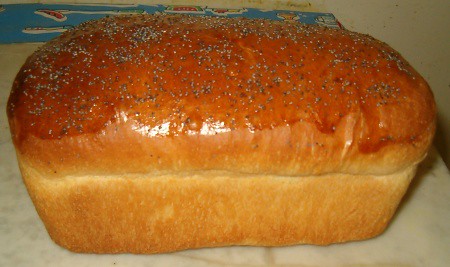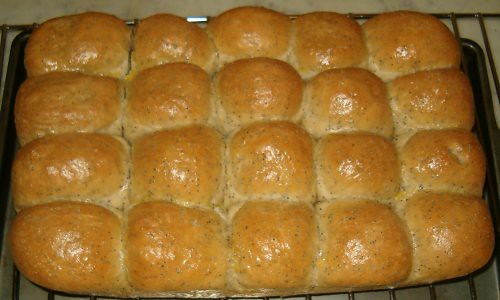Here is my crack at terminology that is commonly used in bread baking. It's a start, with a hope that with some comments these will be corrected and added on to.
Poolish - A French term. Uses commercial yeast. An aged mixture that is made up of equal amounts of water and flour, by weight, and a small (tiny) amount of yeast. (1)
Biga - An Italian term. Uses commercial yeast. An aged mixture that is made up of water and flour, which may but do not have to be of equal amount. A tiny amount of yeast is also added to this mixture.A Poolish is really just a form of Biga. A Sponge is the English term for Biga. (1)
Starter - An English/American term. An aged mixture that is usually maintained in a very small amount, that is used to start or seed a larger mixture that is then called a preferment. A starter made from commercial yeast is called a straight dough starter and a starter made of wild yeast is called a sourdough starter.
Pate Fermente - A French term. A small piece of dough reserved from the previous batch of bread. This is the only preferment that may contain salt in it.
Preferment - An English/American term. An aged mixture whose primary purpose is to impart a maximum amount of flavor to the resulting bread. This mixture is allowed to fully ferment before (pre-) being added to the final dough mix. Examples are: Sponge, Poolish and Biga.
Autolyse - A French term. A technique where gluten containing flour and water are mixed and aged for a desired amount of time to arrive at desired gluten development level and flavor characteristics. There are no other ingredients present except flour and water. And flour has to contain gluten.
Soaker - An English/American term. An aged mixture whose primary purpose is to hydrate the dry ingredients that are to be used in the final dough. The dry ingredients are gluten free.
High Extraction Flour - An English/American term. It is a flour that is between White and 100% Whole Wheat. It has a certain percentage of Bran and Germ removed.
Patent Flour - An English/American term. White Flour which was extracted from the central most part of the endosperm. Is considered to have the highest quality of gluten. (1)
Clear Flour - An English/American term. White Flour which was extracted from the outer parts of the endosperm. Around the part where the Patent Flour was extracted from. (1)
Notes:
Difference between Starter, Sponge, Biga and Poolish. Well Poolish has equal amounts of water and flour. Biga and Sponge are the same to the best of my knowledge. A Starter is more clearly defined in a professional bakery environment where a small amount of left over preferment is reserved to be used in the next preferment. The amount of preferment mixed contains a small excess that is fully fermented. Then the small excess is extracted to be used in the following preferment, and the current preferment is added to the dough for the current batch of bread.
---------------------------------------
(1) Source J. Hamelman "Bread"
Edit 09/14/2008
Today I saw a FAQ page so I thought I'd link to it from here:
http://www.thefreshloaf.com/faqs









